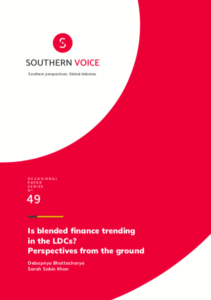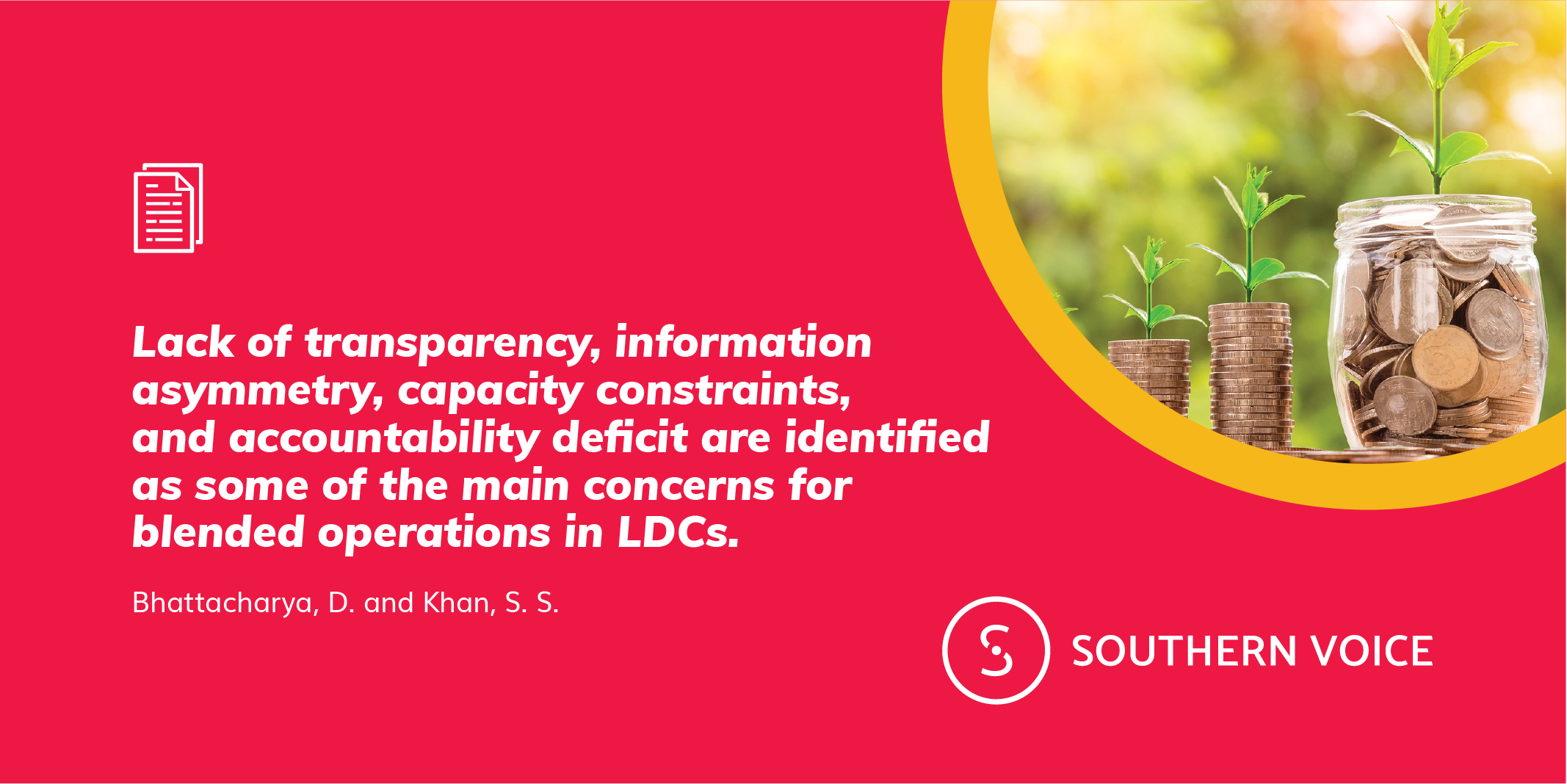On invitation, CPD Distinguished Fellow Dr Debapriya Bhattacharya, also Chair of Southern Voice and LDC IV Monitor, joined the E15’s Second Expert Group…
 Blended finance is picking up as a new source of finance to meet the funding gap in implementing SDGs. However, country perspectives reveal that the concept it is yet to gain full momentum in LDCs. Lack of awareness as well as absence of consensus regarding its definition has held back the instrument from being mainstreamed into the policy discourse. Institutional and regulatory challenges and capacity deficits have also impeded its widespread adaptation. The closest manifestation of blended operations in LDCs have been in the form of public-private partnerships which are still largely confined to infrastructure projects. Nonetheless, instruments of blending have been used for the purpose of managing diverse risks in LDCs for a while. Examples of leveraging blended finance to crowd-in private capital through demonstration effects and by addressing different market barriers are also found in plenty. Nevertheless, existing blended operations are yet to internalize any systematic mechanisms towards monitoring and evaluation of project, assessment of impact or dissemination of knowledge. Operationalization of blended finance is also subject to risks that cannot be overlooked. The amalgamation of these issues, stemming from country experiences, inform certain policy perspectives for LDCs to harness the potentials of, and avoid the curses of, this currently “trending” phenomenon of blending in the development finance architecture.
Blended finance is picking up as a new source of finance to meet the funding gap in implementing SDGs. However, country perspectives reveal that the concept it is yet to gain full momentum in LDCs. Lack of awareness as well as absence of consensus regarding its definition has held back the instrument from being mainstreamed into the policy discourse. Institutional and regulatory challenges and capacity deficits have also impeded its widespread adaptation. The closest manifestation of blended operations in LDCs have been in the form of public-private partnerships which are still largely confined to infrastructure projects. Nonetheless, instruments of blending have been used for the purpose of managing diverse risks in LDCs for a while. Examples of leveraging blended finance to crowd-in private capital through demonstration effects and by addressing different market barriers are also found in plenty. Nevertheless, existing blended operations are yet to internalize any systematic mechanisms towards monitoring and evaluation of project, assessment of impact or dissemination of knowledge. Operationalization of blended finance is also subject to risks that cannot be overlooked. The amalgamation of these issues, stemming from country experiences, inform certain policy perspectives for LDCs to harness the potentials of, and avoid the curses of, this currently “trending” phenomenon of blending in the development finance architecture.


